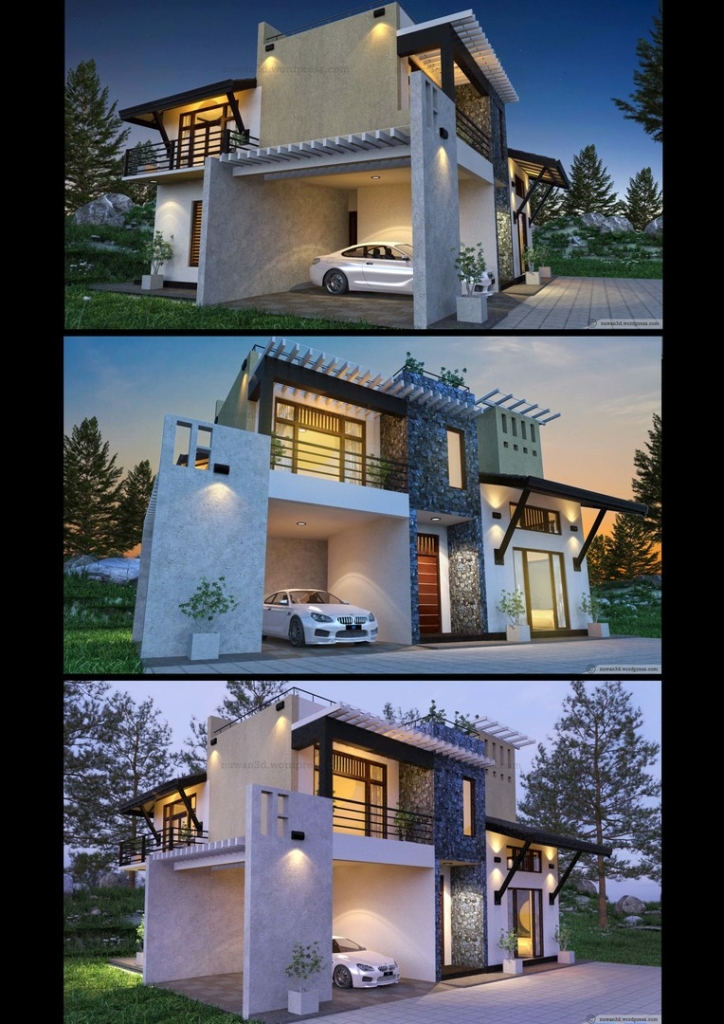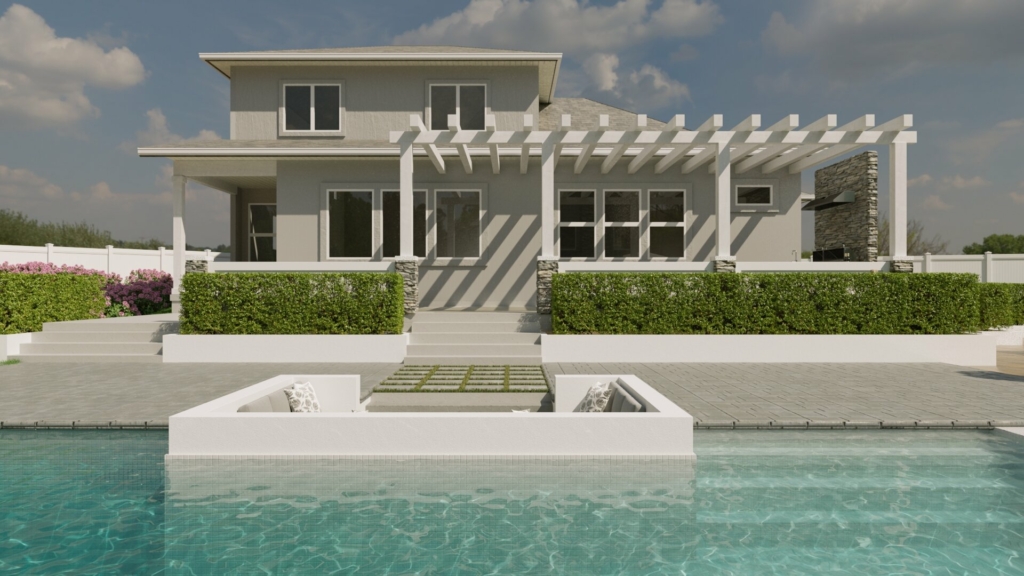One of the most critical aspects of creating a compelling project brief is to communicate the correct camera angles. After all, your chosen views have a direct and drastic effect on the impression that the audience will have. The angle presented to your client is the first image that will be imprinted to their brain as the first impression of your projects.
Using the right camera angles will help you redirect the focus of the attention of your audience to the specific features you wish to highlight. This article talks about presenting camera angles with 3D architectural visualization services for projects.
 Table of contents
Table of contents
- Camera angles as essentials in 3D architectural visualization
- Bird’s eye-view or aerial shot
- Bystander’s eye-level angle
- Close-up angle
- Corner angle
- Down angle
- Elevated angle
- Eye level angle
- Panoramic angle
- Profile or side view
- Wide angles
- Tips for capturing the best camera angles for 3D architectural visualization
- Wrapping it up
- How Cad Crowd can help
Camera angles as essentials in 3D architectural visualization
Modern 3D visuals that use CGI have made it easier and possible for buyers to view and explore the corners and spaces of properties even before their actual construction. Camera angles play a critical role in the customer’s exploration.
The dramatic enhancement of the perspective of a building is mainly dictated by the specific camera angles chosen and used during rendering. Simply put, the best camera angles can breathe life into rendered projects and transform expert 3D visuals into vivid and realistic depictions just by seeing it in the right angles.
Camera angles for 3D architectural visualization have now become a vital tool for both architectural companies. They are the primary features that make 3D architectural visualizations more appealing and impactful. The right camera angle will not only improve the final results but also showcase the best features that your customers are meant to see to ultimately help them decide.
This is why it is essential to know the best camera angles that will strike the perfect visuals to show off a balance between the fine architectural details of a building and how it complements the surrounding area.
The following are some of the best camera angles in 3D architectural visualization services for your projects.
RELATED: Optimal angles for real estate rendering services: immediately enhancing your listings

Bird’s eye-view or aerial shot
Also called a context shot and aerial view, a bird’s eye view presents either the interior or exterior visuals from a point where the overall picture can be seen, just like a bird flying over a property. Exterior or Interior rendering services made using this approach give the image its context. These angles are perfect for architectural structures with unique surroundings and landscapes.
These camera angles can be produced from the location’s drone shots or developed from scratch in 3D software. These top-down perspectives can put the property within the context of the surroundings. When done right, aerial shots can produce an ideal sense of scale.
Bystander’s eye-level angle
Also called the street view, the name bystander’s eye-level angle is self-explanatory. The angle shows the property from the perspective of a passerby. These angles are recommended for exterior 3D architectural renderings services because they give the visuals a sense of life.
Potential property buyers can get a clearer idea of how well a building will blend in with the urban context. The primary goal of this angle is to give the stakeholders a scaled view of the construction.
Close-up angle
Close-up angled 3D shots give realtors the perfect opportunity to entice more potential buyers while showing off the property and all its exquisite details. 3D architectural visualization made in this angle emphasizes all the details of the architectural structure.
These camera angles can portray elegant structures, interior or exterior dimensions, textures, ornate design elements, materials, and other aspects. These all demonstrate the architect’s craftsmanship and entice buyers to sign the dotted line.
Corner angle
Corner angle shots are recommended for interior architectural rendering projects. These camera angles show two different walls in the same room in just one image. Different architectural components including windows, doors, crown moldings, ceilings, rafters, and others are presented to the potential buyers using these CG images.
This specific angle creates a better sense of depth and dimension. It offers the buyers a more visually engaging and immersive viewing experience of the property. Corner views can also work well for exterior shots. These can show a distinct angle where a house’s two sides meet.
RELATED: Top photorealistic furniture rendering techniques for interior design companies

Down angle
3D artists recommend the down-angle view for interior architectural rendering services. Down angles give the audience a better view of all the elements of the interior design. It is most suitable for bigger rooms where it can be challenging to capture the whole space at eye level.
Buyers will be able to see the entire layout in just one go using these camera angles. They get a clearer view of the critical determiners, including how the placement of furniture or the décor elements complement the space.
Down camera angles in 3D architectural visualization work ideally for online property listings where there are hundreds and even thousands of potential buyers looking for their dream properties. Aside from online forums and listing websites, realtors also take advantage of these images for their printed marketing materials like brochures.
Elevated angle
Elevated angles are also called semi-aerial views. Based on their name, these angles present the structure from an elevated view or a slightly higher perspective. These angles for architectural exterior rendering are best proven to give a complete view not just of the property but also of the surrounding local area. These shots show the surroundings to let the viewers see the landmarks close to them if there are any.
Eye level angle
Eye-level shots are informally referred to as the hero shot as far as architectural jargon is concerned. These angles offer a human-eye perspective that puts the audience up close and personal with the property. It makes it easier for them to scale and appreciate the proportions of the scale.
The eye-level exterior or interior angle shows lots of details that mimic points of view in real life. CG images produced using this angle can almost instantly resonate with prospective buyers.
Panoramic angle
Panorama is another ideal camera angle used for 3D architectural visualization presentations. This is among the most perfect interior rendering solutions that can offer potential buyers an immersive viewing experience. Panoramic 3D-rendered images give real estate developers or dealers the most complete views of a property’s interiors.
It’s more preferred to render rooms with unique features or details in a panorama. Since panoramic angles offer a projection of the space in 360 degrees, viewers can fully experience and appreciate the complexity, dimension, and scale of a room. The angle is also recommended for 3D virtual house tours.
RELATED: 3D Rendering: 15 reasons to use 3D photorealistic rendering at your furniture company
Profile or side view
The profile view or side angle shows one specific side of the property. Side views are regarded as equally critical as the rest of the angles. It is primarily because such angles can add a better variation and perspective to the visuals. These angles also make it easier to understand how the property and its surrounding neighborhood interact with each other.
Wide angles
Wide angles are recommended for interior renderings presenting the whole space. These angles are more descriptive instead of focusing on just a single aspect or feature of a property. Wide-angle lenses at 16 to 28mm are used to take these shots in architectural photography. The photographer captures a snap from the rear of the room to cover the whole space in the frame.
With the use of 3D modeling software and technology, professional 3D modeling specialists produce wide-angled views of a property. These architectural renders give buyers a clearer view of the overall design, layout, and proportions of a room.
Wide-angle shots are recommended for images used on social media platforms and property listings. These are also ideal for traditional promotional materials such as flyers, brochures, magazines, banners, leaflets, and the like.

RELATED: Creating exterior renderings using 3D exterior rendering services for architects
Tips for capturing the best camera angles for 3D architectural visualization
Here are helpful tips for capturing the best camera angles that can be used for 3D architectural visualization:
Provide elevation drawings to show exterior camera angles. These not only indicate the preferred angles but also offer insights into materials, height, and architectural features.
Adding indications on floor plans for interior rendering and on-site plans for exterior rendering is a great way to show your preferred camera angles.
Hand-drawn sketches are invaluable for 3D modeling or construction projects that are yet to be done.
Creating 3D models is no doubt the best way to get the exact results you’re looking for in both interior and exterior architectural visualization. Showing different views will ensure that the layout and architecture of the project are accurately captured. There is also no room for ambiguity when presenting camera angles. The artists can capture your vision right from the start to avoid revisions.
If you’re unsure about the camera angles to use for your project, work with professional artists who can simplify the job for you. All you have to do is tell them if you prefer top, frontal, or side views. You can even just leave things to the discretion of the artist. Professional 3D experts will choose the best angles that can highlight your project and its most vital features.
Wrapping it up
When trying to determine how to present camera angles in your next project, always remember that it is always better if you also show more detailed visuals.
How Cad Crowd can help
Cad Crowd will help you find the best 3D architectural visualization services that use only the most suitable camera angles that can bring your projects to life! Experienced artists can masterfully fulfill your visions even if your project is still in its earliest stages.

